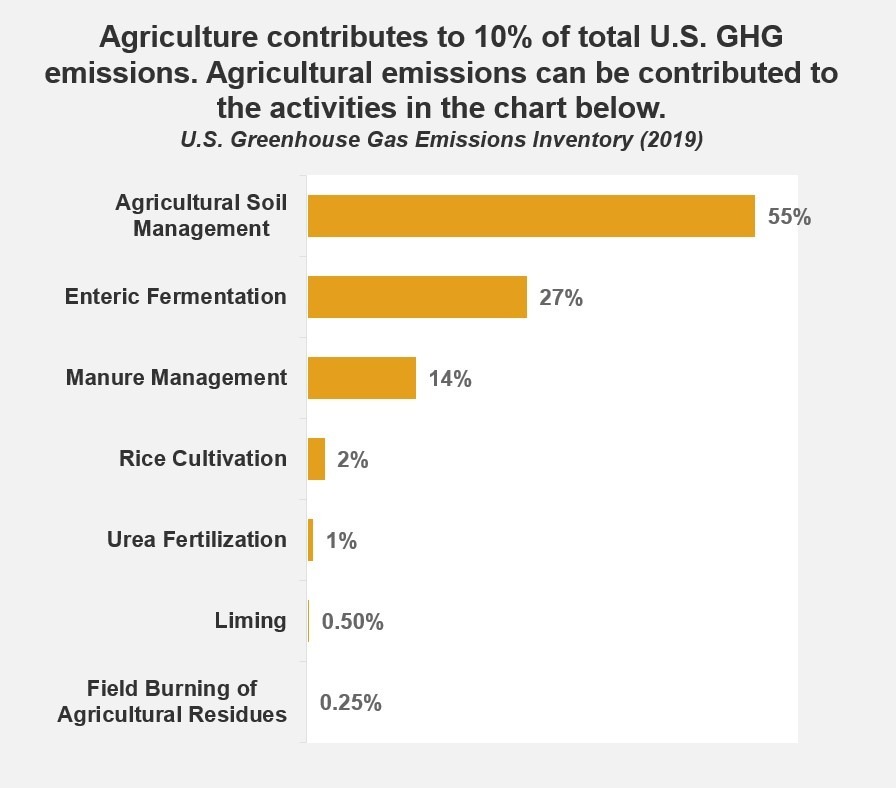What Adds to Agricultural Greenhouse Gas Emissions In the US?
Content adapted from The Context Network “Get Smart, Stay Smart” Ag Carbon Service.
The short answer: Soil management is responsible for over half the greenhouse gas emissions generated by agriculture in the United States. Enteric fermentation—or gases created by livestock digesting their food—account for another 27%, and manure management another 14%.

Figure provided by the Context Network, LLC.
But how does soil management contribute to emissions?
- Agricultural soils are the largest human-driven source of nitrous oxide emissions in the U.S., according to the 2020 Inventory of U.S. Greenhouse Gas Emissions and Sinks.
- Fertilizer application, manure use, growing N-fixing plants—all these factors are part of soil management that are large contributors to nitrous oxide emissions from agricultural soils.
- Nitrous oxide is a greenhouse gas 300 times more potent than carbon dioxide. Because nitrous oxide is so potent, activities that contribute to nitrous oxide emissions make up a larger proportion of emissions overall. Crop production, weather patterns, and synthetic fertilizer use are all major factors in how much nitrous oxide is emitted from soils. Nitrous oxide is driven by the 4 Rs.

The U.S. Environmental Protection Agency released a report, “Inventory of U.S. Greenhouse Gas Emissions and Sinks.” Table 5-2 breaks down emissions from specific aspects of U.S. agriculture by type of greenhouse gas.
Break it down: Nitrous oxide emissions from the soil and soil management results from a combination of natural processes occurring in the soil, along with environmental factors like weather, temperature, and soil moisture.
- Microbes are responsible for denitrification, in which nitrate (NO3–) is converted to nitrogen gas. If nitrate isn’t completely converted to nitrogen gas, the by-product is nitrous oxide, the greenhouse gas. Applying commercial fertilizers, according to Oklahoma State, increases the amount of inorganic (or synthetic nitrogen) in the soil, increasing nitrous oxide emissions from microbial decomposition.
- The breakdown of cover crops and manure is another source of nitrous oxide emissions from agricultural soil. However, nitrogen in cover crops and manure isn’t as readily available for microbes to break down, making the conversion process from biomass to plant-available nutrients (and nitrous oxide) slower.
- Here’s the rub: unlike carbon, you can’t really sequester nitrous oxide in the soil. By carefully reducing the amount of nitrogen present for denitrification at key times—like seasons with high temperatures or high soil moisture—we can reduce nitrous oxide emissions from agricultural soils.
The big picture: Because agricultural soil management accounts for such a large portion of greenhouse gas emissions, it also makes a great place to target emission reduction.
Photo by Jason de Koff.








